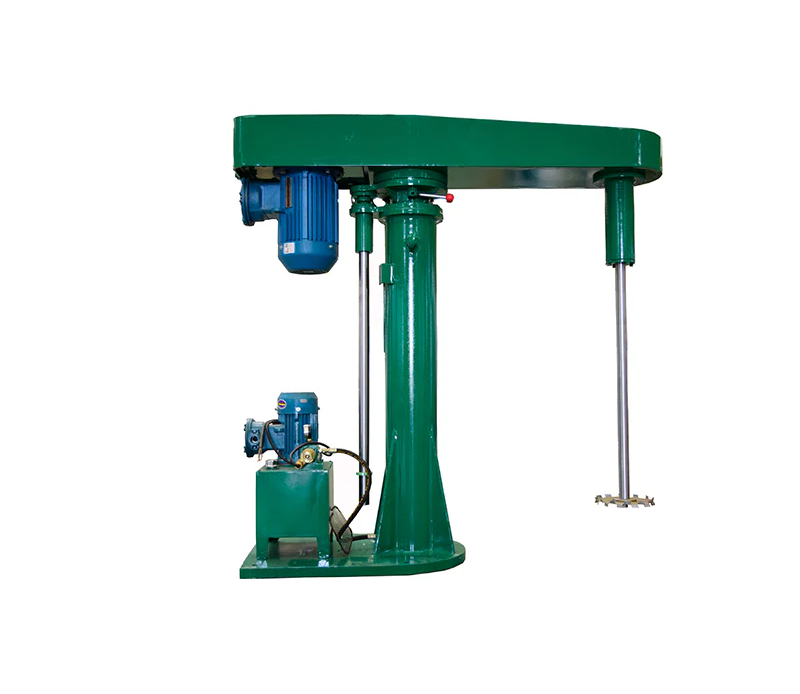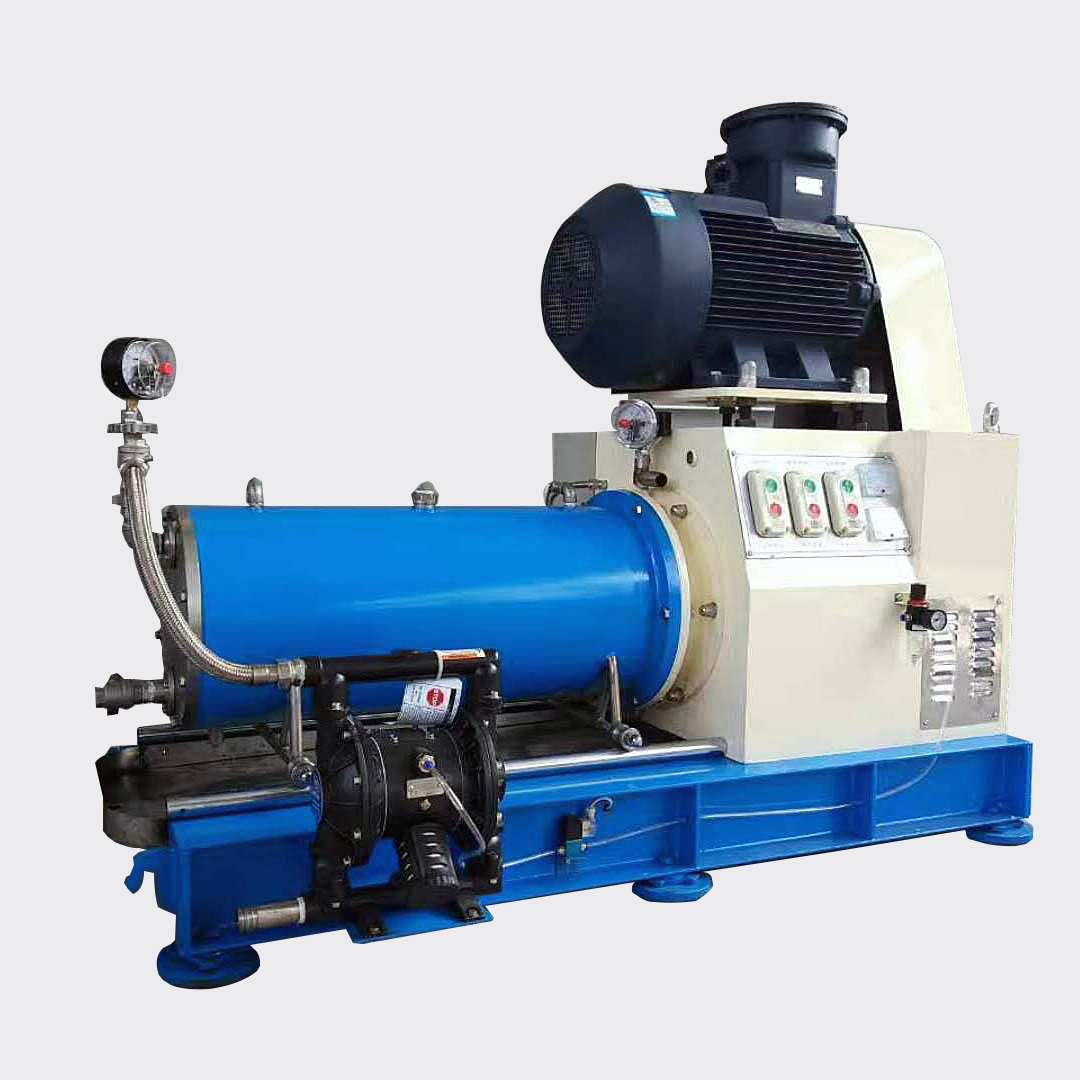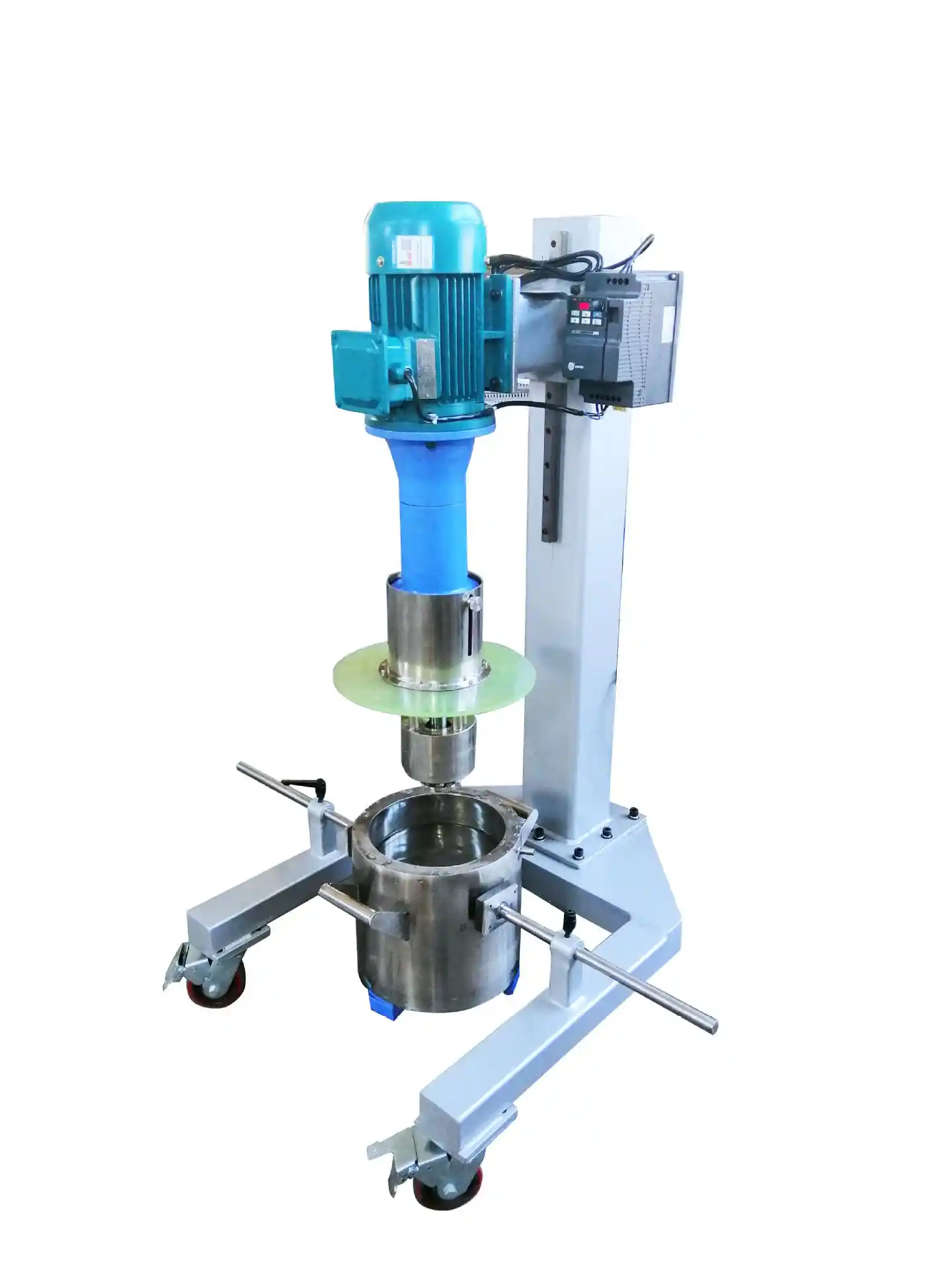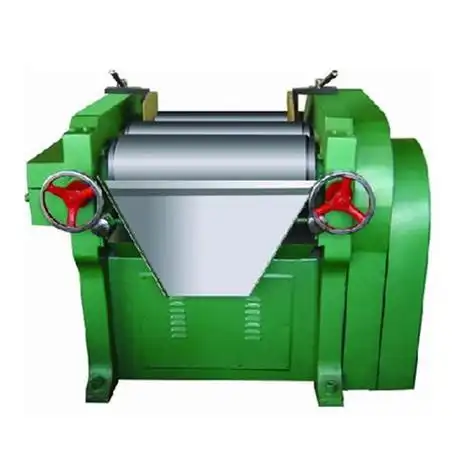In the precision chain of coating manufacturing, the disperser plays an irreplaceable key role. It is far more than a simple mixing device; rather, it is a core technological equipment that uses powerful mechanical force to deagglomerate, wet, and uniformly disperse pigments and fillers in a liquid binder. Understanding the disperser and its operation is the key to unlocking coatings with high hiding power, vibrant colors, stable film formation, and durable performance.
Ⅰ. What is a disperser?
1.1. Definition of a Disperser
A disperser is a specialized piece of equipment used in paint production lines to precisely process solid powders. Its core mission is to break up agglomerates, promote wetting, and achieve ultra-fine and stable dispersion. Through high-speed rotating components such as impellers, grinding media, or rollers, it generates strong shear, impact, and friction forces to ensure that micro-fine particles are uniformly suspended in the base material composed of resins, solvents, and additives, laying the foundation for the exceptional performance of the paint. The disperser is the “raw material processor” and “quality foundation builder,” responsible for transforming solid pigments/fillers into stable, fine liquid color pastes/grinding slurries. Without it, there would be no qualified color paste base.
1.2. Main types of Disperser Machine:
1. High-speed disperser: Expert in pre-dispersion and basic mixing
Core feature: High-speed serrated disc impeller.
Working principle: Generates strong shear turbulence, efficiently wetting dry powder and initially breaking up agglomerates. Easy to operate, high throughput, and easy to clean.
Application Scenarios: Pre-mixing/wetting stage, basic dispersion and final paint mixing in medium to low viscosity systems. Particle size range typically 20–50 microns, serving as an efficient pioneer in production lines.

2. Sand Mill: Creator of Ultra-Fine Dispersion and High-Performance Coatings
Core Technology: Zirconia/glass beads as grinding media in the grinding chamber and high-speed rotor.
Working Principle: The intense movement of the media generates extreme impact and shear forces, grinding pigments down to the submicron level.
Application Scenarios: Precision grinding stage (especially in automotive and industrial coatings). It is the core equipment for achieving top-tier fineness, high color strength, and mirror-like gloss. Vertical and horizontal models each have their own advantages.

3. Basket Mill: A versatile and efficient solution for multi-variety production
Core Technology: A perforated basket with built-in grinding media.
Working Principle: Immersion grinding, with dispersed material directly flowing out through the screen.
Application Scenarios: Small-batch production and frequent color/formula changes. Rapid color change and cleaning with no residual dead zones, achieving fineness below 10 microns. It represents flexibility and efficiency.
 4. Three-roll mill: Expert in high-viscosity and ultra-high gloss applications
4. Three-roll mill: Expert in high-viscosity and ultra-high gloss applications
Core feature: A three-roll system with precise gaps (differential speed).
Working principle: The gaps between the rolls generate a significant shear force, repeatedly crushing the material.
Application Scenarios: Ultra-high viscosity systems (e.g., certain inks, thick-paste coatings). Excels at processing difficult-to-disperse materials, delivering top-tier fineness and gloss. Requires high operational precision, with relatively complex cleaning procedures.

II. The Primary Role of Dispersion Machine in Coatings Production
Dispersers are one of the most critical core pieces of equipment in coatings production. Their primary function is to uniformly and stably disperse pigments, fillers, and other solid powders into liquid binders (resins, solvents, etc.), forming stable, fine, and high-performance coatings, slurries or final products. Specifically, their role in coatings production is reflected in the following key aspects:
1. Deagglomeration and Dispersion:
Pigments and fillers often form agglomerates or aggregates during production and storage. The disperser generates strong shear forces, impact forces, and turbulence through the high-speed rotation of the impeller. These mechanical forces effectively break down and deagglomerate these agglomerates, releasing primary particles or small aggregates. This is the foundation for achieving good color strength, hiding power, and gloss. The finer the dispersion, the larger the effective surface area of the pigment, and the more fully its performance is realized.
2. Wetting:
During the dispersion process, the powerful mechanical forces also promote the wetting of the liquid binder on the surfaces of pigments and fillers. The liquid replaces the air and other impurities adsorbed on the surfaces of pigment particles, forming a protective layer. Good wetting is a prerequisite for the stable dispersion of pigment particles and the prevention of re-agglomeration. The intense mixing provided by the disperser significantly accelerates the wetting process.
3. Homogenization:
A disperser not only disperses solids but also vigorously mixes all formulation components, including resins, solvents, pigments, fillers, and additives. Ensuring uniform composition throughout the system avoids localized areas of excessive or insufficient concentration, which is critical for the final performance and batch consistency of the coating.
4. Stabilization:
Although the disperser primarily provides mechanical dispersing force, efficient dispersion is the first step toward achieving a stable dispersion. During the dispersion process, additives such as wetting and dispersing agents in the formulation can better exert their effects by adsorbing onto newly exposed pigment surfaces. Through electrostatic repulsion or steric hindrance effects, they prevent dispersed particles from reaggregating. The vast new surface area created by the disperser enables stabilizers to adsorb effectively. A well-dispersed system is more easily stabilized by stabilizers.
5. Enhancing coating performance:
Coloring power and hiding power: Pigment particles are fully dispersed into smaller particles, significantly improving their color efficiency and hiding power.
Gloss: Finer, more uniform particle distribution results in a smoother paint film surface, concentrating light reflection and enhancing gloss (especially for high-gloss paints).
Flowability: A well-dispersed system without coarse particles has better flowability, aiding paint film leveling.
Storage Stability: A well-dispersed system protected by stabilizers is less prone to settling, caking, or flocculation, resulting in a longer storage life.
Viscosity Control: The dispersion process affects system viscosity. Adequate dispersion typically yields more stable viscosity.
Durability: Uniform dispersion helps form a denser, more uniform paint film, potentially improving weather resistance, chemical resistance, and other properties.
III. How Dispersers Are Integrated into Coatings Production Lines
Modern paint production is a highly automated and streamlined process, with dispersers at its core, but requiring close coordination with tinting machines, homogenizers, filling machines, and other equipment. Modern coatings production is a prime example of equipment working in tandem, with dispersers serving as the core hub:
1. Raw Material Pre-dispersion (High-Speed Disperser):
Dry powder pigments/fillers are preliminarily wetted and coarsely dispersed in a tank driven by a high-speed disperser, forming a uniform slurry to prepare for fine grinding.
2. Precision Grinding (Sand Mill/Basket Mill): The pre-dispersed slurry is pumped into a sand mill or basket mill, where it undergoes repeated, intense grinding and shearing under the action of grinding media, reducing pigment particles to the target fineness (e.g., <10 μm or lower), resulting in color-stable, uniformly dispersed **color paste or ground slurry**. This step is critical for the final product’s color, gloss, and stability.
3. Final Color Adjustment and Blending (Paint Mixing Tank + Paint Dispensing Machine + Homogenizer):
Qualified ground slurry enters a large paint mixing tank.
The color matching machine, based on the formula or customer-required color, uses an automated color matching system to precisely measure and pump one or more types of high-concentration, high-fineness color paste prepared by the disperser into the paint mixing tank.
The role of the color paste is to fine-tune the final coating’s color to meet precise color difference requirements.
The remaining resin, solvent, and key additives are added.
The homogenizer (low-speed high-efficiency mixer) is started, stirring at medium-low speed to thoroughly and gently mix all components uniformly, adjusting to the final viscosity and performance metrics. This stage avoids excessive shear that could disrupt the established stable structure or introduce bubbles.
4. Quality control and filtration
Take samples from the paint mixing tank and test for color, viscosity, fineness (typically already met during the grinding stage), gloss, density, and other indicators to ensure compliance with standards. After passing inspection, the paint is filtered through **filtration equipment** (such as bag filters or screens) to remove any remaining impurities or large particles.
5. Filling (filling machine):
Qualified final paint products are transported to the filling machine. The filling machine operates according to the set capacity, precisely, quickly, and cleanly filling the paint into packaging drums/cans. The filling machine typically has automatic capping, sealing, and labeling functions.
IV. Conclusion: Disperser—the indispensable core of quality coatings
Therefore, the disperser is the cornerstone and core component of the entire paint production process. It provides the color matching machine with base color paste and the mixing machine with qualified semi-finished products, ultimately ensuring the stable and reliable quality of the products output by the filling machine. Each piece of equipment is interconnected and works in tandem to achieve efficient, high-quality paint production.
Selecting and applying appropriate dispersion technology is a strategic decision for coating manufacturers to enhance efficiency, ensure quality, and develop high-performance products. Whether it is the efficient pre-mixing of high-speed dispersers, the ultra-fine grinding of sand mills, the flexible and versatile basket mills, or the extreme processing of three-roll mills, they collectively form the foundation of precise dispersion in coating manufacturing. Gaining a deep understanding of the role of dispersers and their synergistic processes is a critical step toward optimizing production and meeting market demands for high-performance, high-stability, and color-accurate coatings.
How does your coating production select a dispersion solution? Explore the dispersion technology best suited to your product line and unlock the full potential of your coatings!